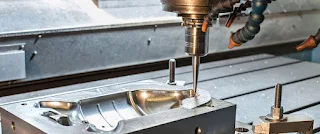Aluminum Die casting: Advantages, disadvantages and its applications
Aluminum casting is the process used to produce precisely defined, smooth or textured surface metal parts.
The process involves forcing molten aluminum into a mold cavity under high pressure.
What are the advantages of Aluminum casting?
Aluminum casting offers significant benefits that make it a popular choice across varied industry verticals. Here are some of its significant benefits –
- Lightweight: Aluminum is a light metal and is ideal for applications where reducing weight is important, like automotive and aerospace components.
- High-strength: Aluminum possesses excellent strength. It can be alloyed with other metals like silicon, magnesium, and copper to boost its mechanical properties and structural integrity.
- Resistant to corrosion: Aluminum forms a protective oxide coating and is highly resistant to corrosion. This property is enhanced with treatments like anodizing, painting, or lacquering, making it a suitable for harsh environment and outdoor applications.
- Recyclable: Aluminum casting uses highly recyclable material. Using recycled aluminum requires only 5% of the energy used to make new aluminum. This makes aluminum casting a more eco-friendly manufacturing process.
- Cost-effective: Aluminum casting is the cost-effective process. The process is simple and does not need expensive equipment or materials. Also, the parts produced are solid and durable.
Also read: What is Aluminum casting and what are its different types of processes
What are the Disadvantages of Aluminum Die casting?
Aluminum casting is a highly efficient and versatile manufacturing process yet has some disadvantages that include-
- High initial costs: The initial costs of setting up die casting machinery and creation of molds are quiet high. The molds are made from high-quality steel to withstand high pressures and temperatures, and the process is energy-intensive.
- Long lead times: Another disadvantage of this process is long lead times. The process can take several weeks to complete which can be an issue for the businesses that needs parts quickly.
- Porosity issues: One of the main issues of this casting process is it is subject to porosity. Porosity is the formation of small air pockets or holes within the cast part. It compromises the structural integrity of the part making them unsuitable for high-pressure applications. Also, these holes can weaken the metal and make it more susceptible to corrosion or breakage.
- Size limitation: There are sizes limitations to the parts that can be produced with aluminum die casting. Very large parts are impractical to cast because of equipment limitations and cost-effectiveness of the process.
- Environmental concerns: Aluminum casting consumes high energy. The process produces harmful wastes including metal scraps and used die lubricants which need proper disposal.
What are applications of Aluminum casting?
Aluminum casting has wide applications in varied industry verticals that include –
• Automotive industry
• Electronics
• Construction
• Energy Sector
• Consumer products
• Military and Defense
Aluminum die casting has many benefits over the traditional manufacturing processes however it does has some limitations. Ultimately the decision to use this casting process will depend on the specific requirements of the application that include desired material properties, production volume and cost considerations.




Comments
Post a Comment